Twelve wire, each having equal resistance r, are joined to form a cube as shown in figure.Find the equivalent resistance between the diagonally opposite points a and f.
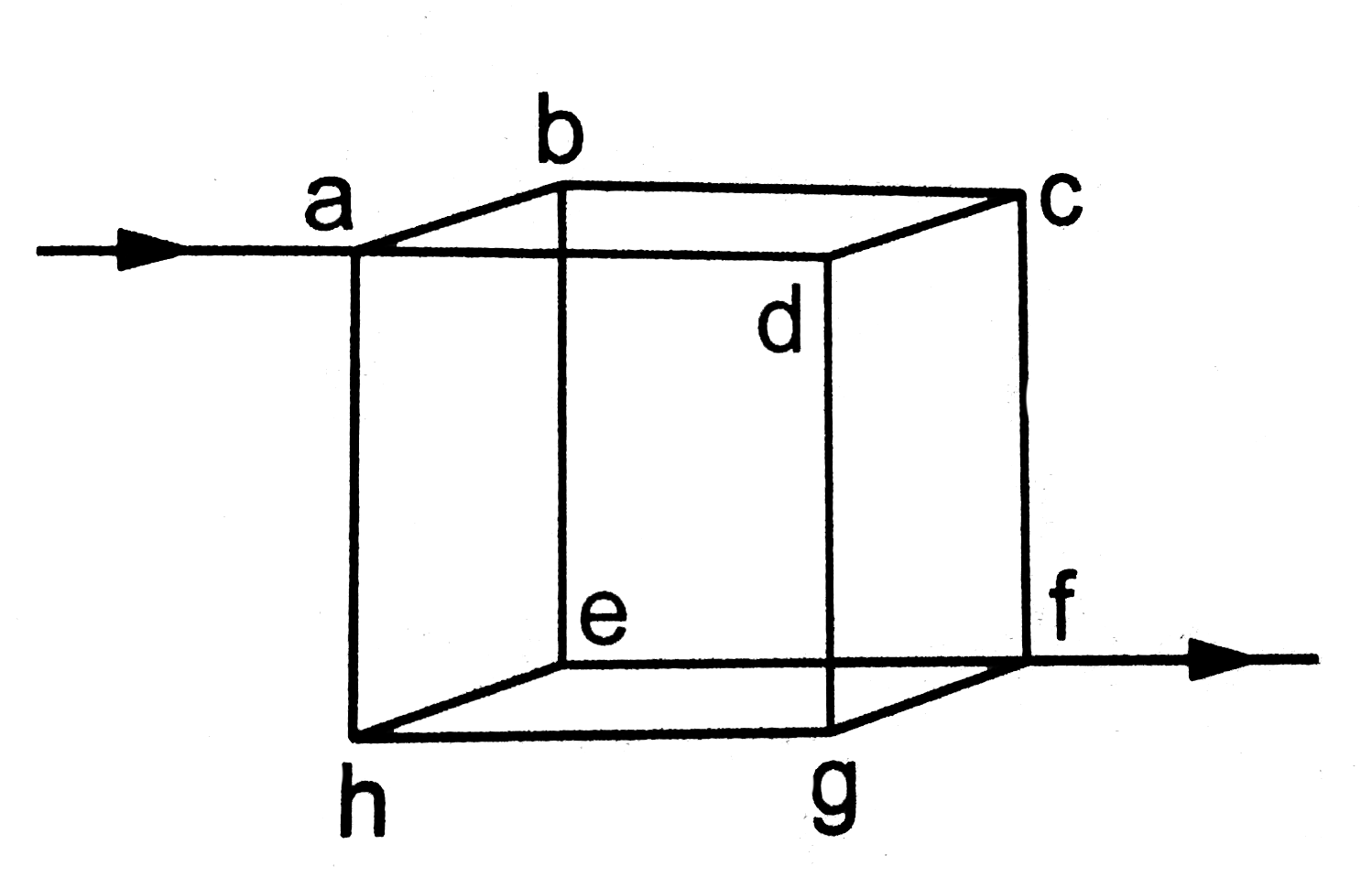
Taking circuit ABFGA,
i/3r + i/6r + i/3r = V
⇒(2i3r+i6r)=V
⇒(5i6r)=V
⇒Reff=Vi=56r.
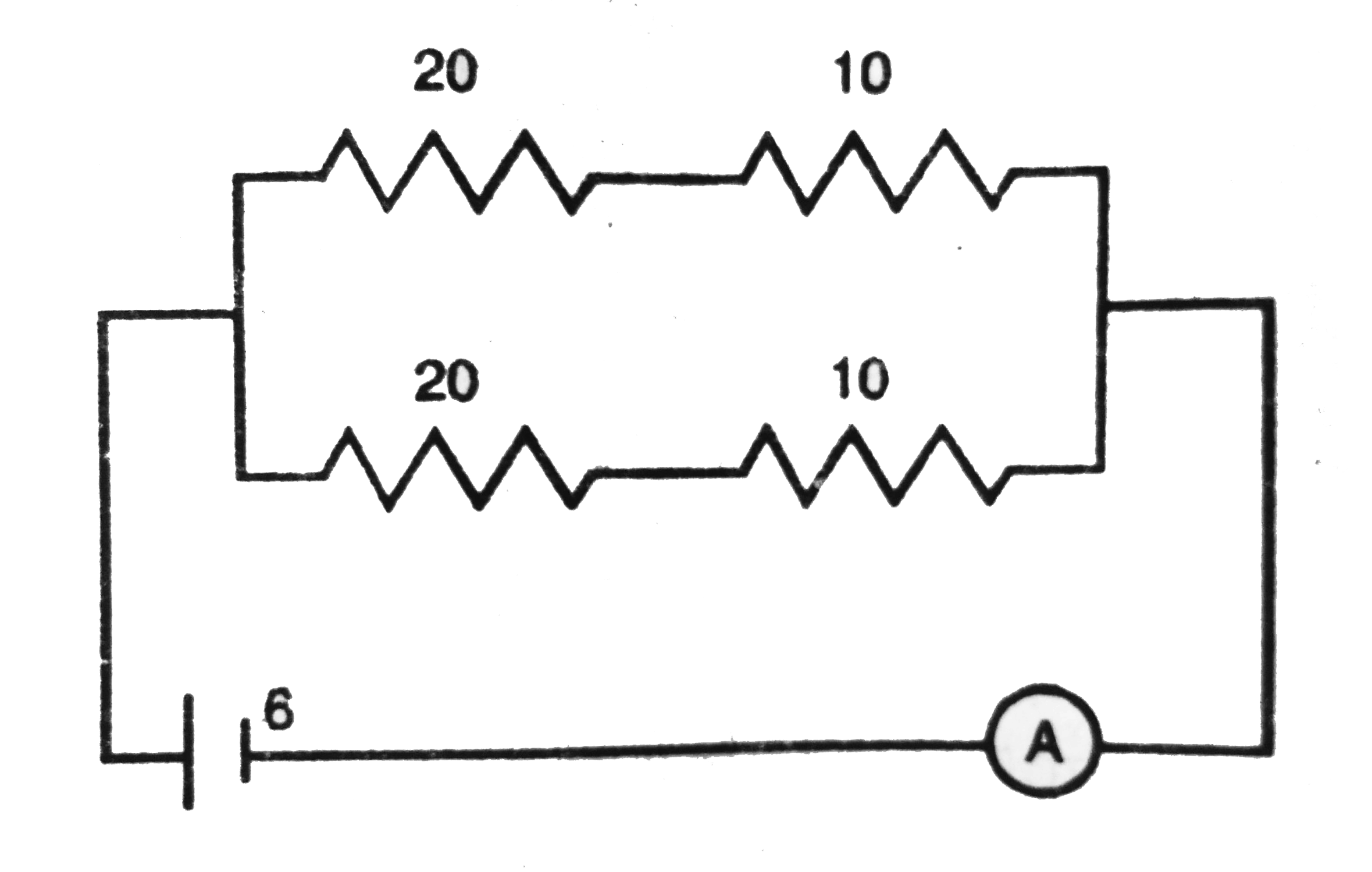
Topper's Solved these Questions
- ELECTRIC CURRENT IN CONDUCTORSBook:HC VERMAChapter:ELECTRIC CURRENT IN CONDUCTORSExercise:Objective 2
Explore 9 Videos
- DISPERSION AND SPECTRABook:HC VERMAChapter:DISPERSION AND SPECTRAExercise:Exercises
Explore 11 Videos
- ELECTRIC CURRENT THROUGH GASESBook:HC VERMAChapter:ELECTRIC CURRENT THROUGH GASESExercise:Exercises
Explore 23 Videos
Similar Questions
Twelve wire, each having resistance r, are joined to form a cube as shown in figure.Find the equivalent resistance between the end of a face diagonal such as aandc.
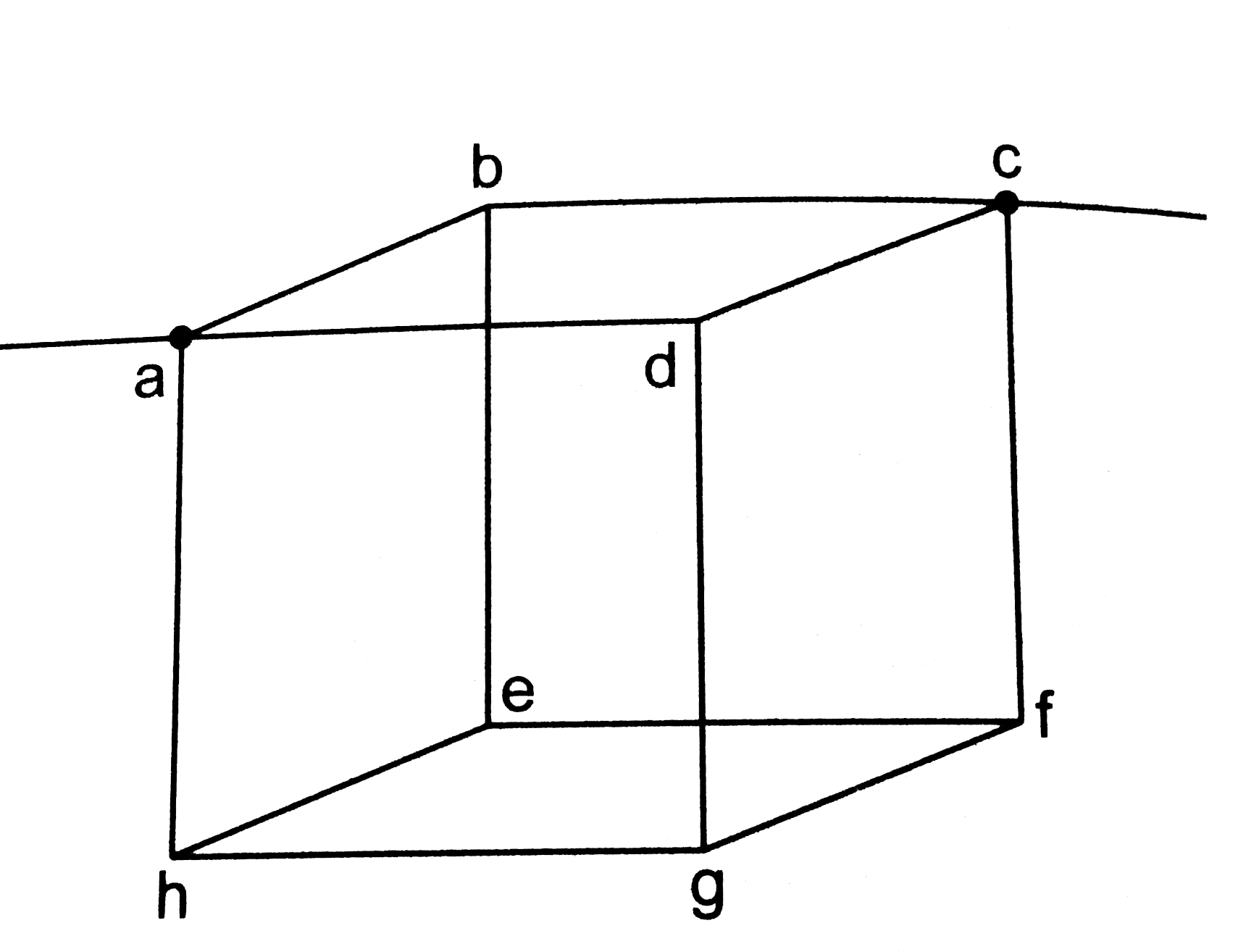
View SolutionTwelve wire, each having resistance r, are joined to form a cube as shown in figure.Find the equivalent resistance between the end of a face diagonal such as aandc.

View Solution
Knowledge Check
Three equal resistances each of value R are joined as shown in the figure. The equivalent resistance between M and N is
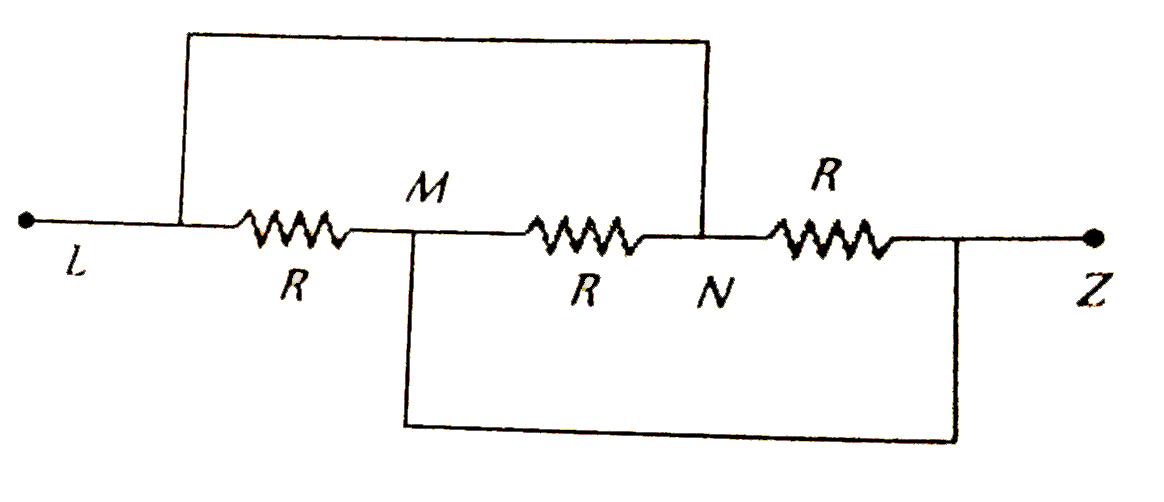 ARB2RCR2DR3
ARB2RCR2DR3Four identical resistances each having value R are arranged as shown in Figure. Find the equivalent resistance between A and B.
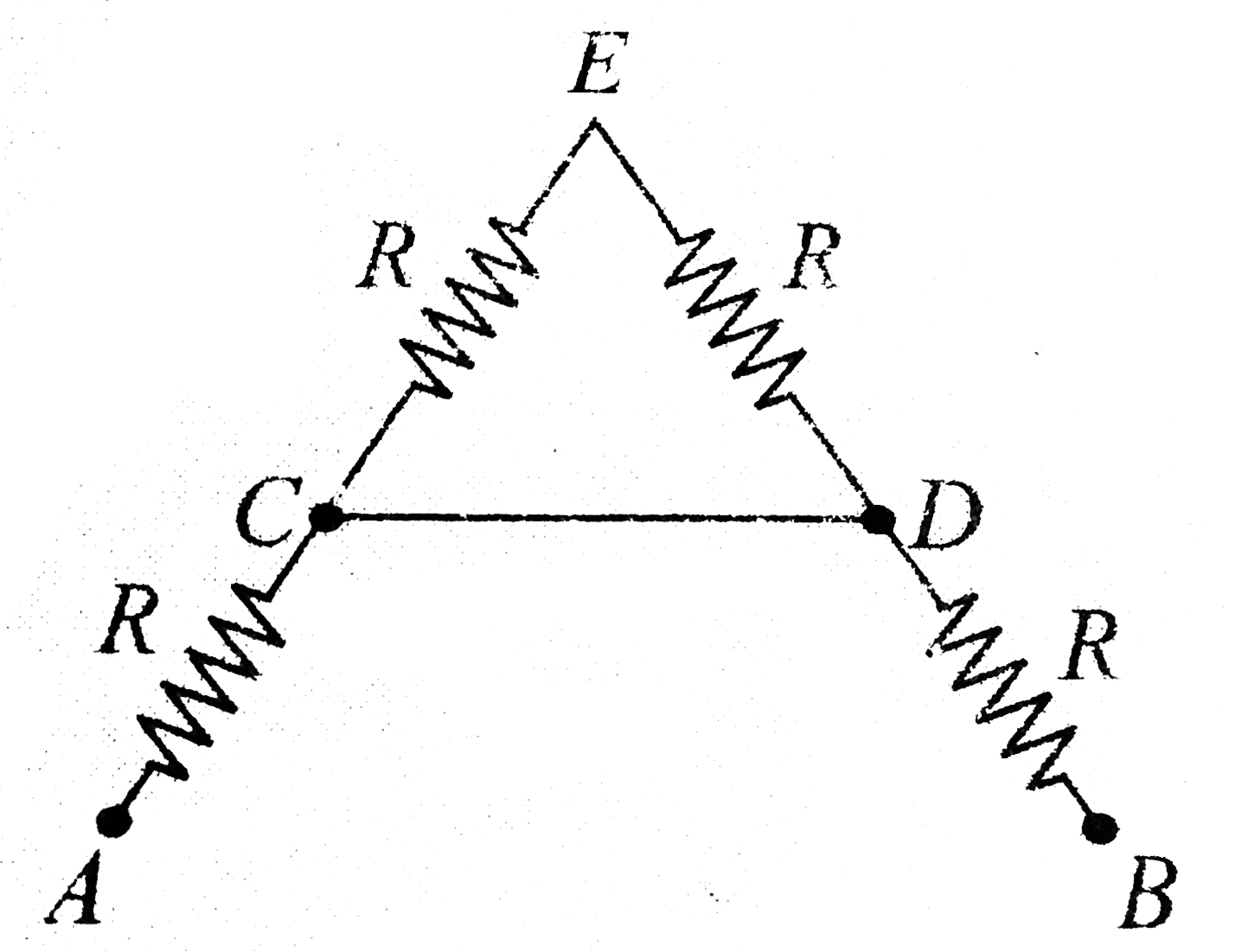 ARB2RC3RD4R
ARB2RC3RD4REach wire shown in figure-3.321 is ofresistance R. The equivalent resistance between the diagonally opposite terminal point A andB is:
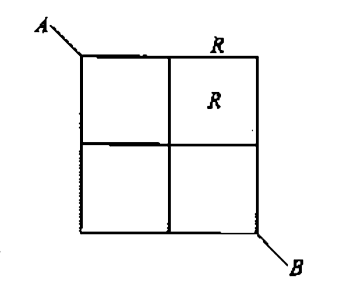 ARB3R2C2RDR2
ARB3R2C2RDR2
Twelve capacitors, each having a capacitance C, are connected to form a cube . Find the equivalent capacitance between the diagonally opposite corners such as A and B.
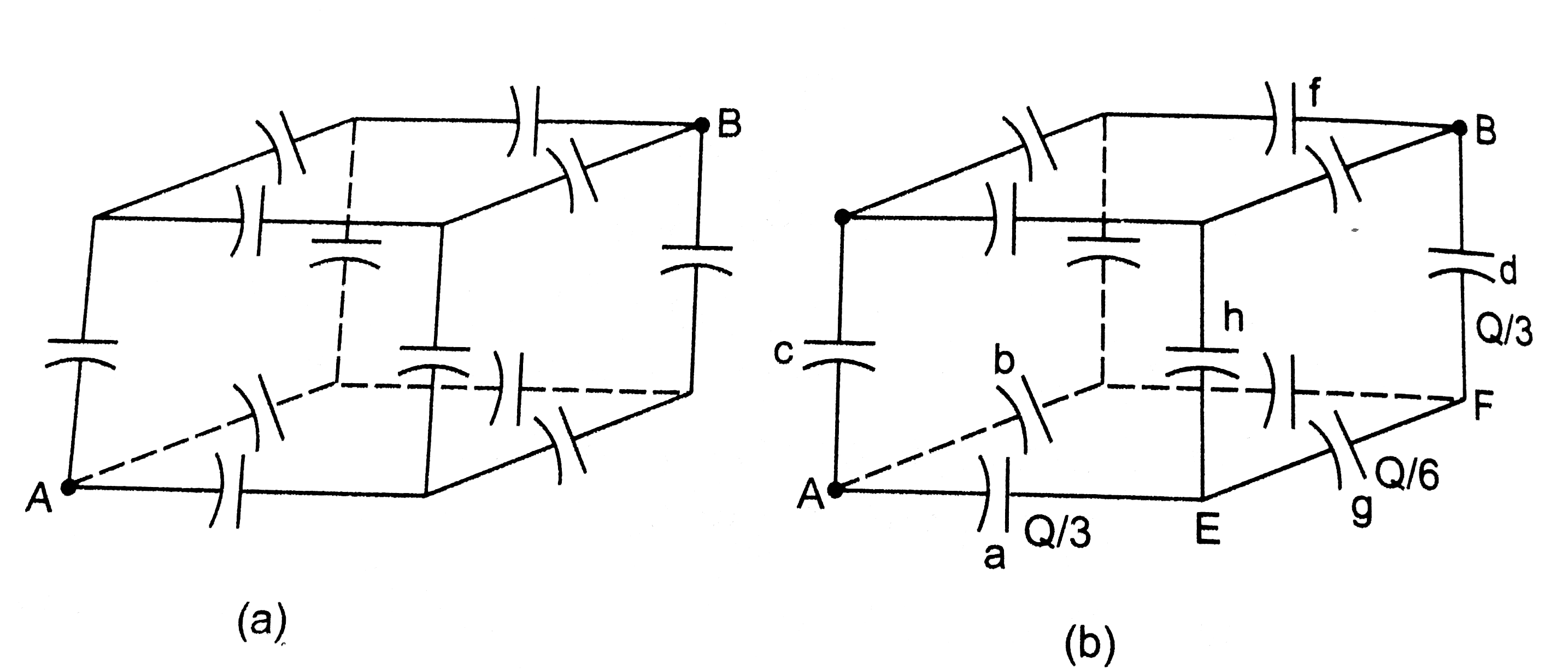
View SolutionTwelve capacitors, each having a capacitance C, are connected to form a cube . Find the equivalent capacitance between the diagonally opposite corners such as A and B.

View SolutionFive resistances are joined as shown in the figure.
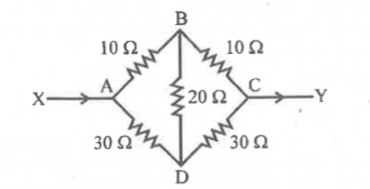
The equivalent resistance between the points X and Y is
View Solution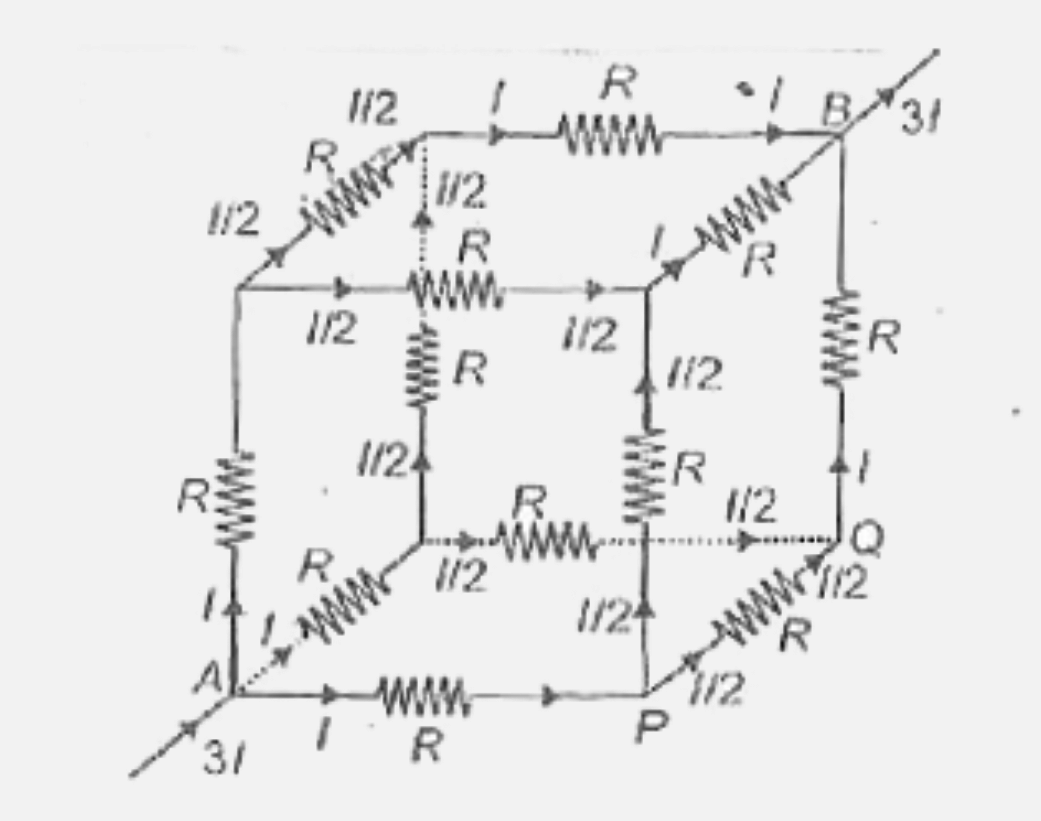
Twelve indentical resistance each of resistance R are joined to form a cube as shown in figure. Find resistance of the combination across AB.
View SolutionFour identical resistances each having value R are arranged as shown in Figure. Find the equivalent resistance between A and B.

View Solution
